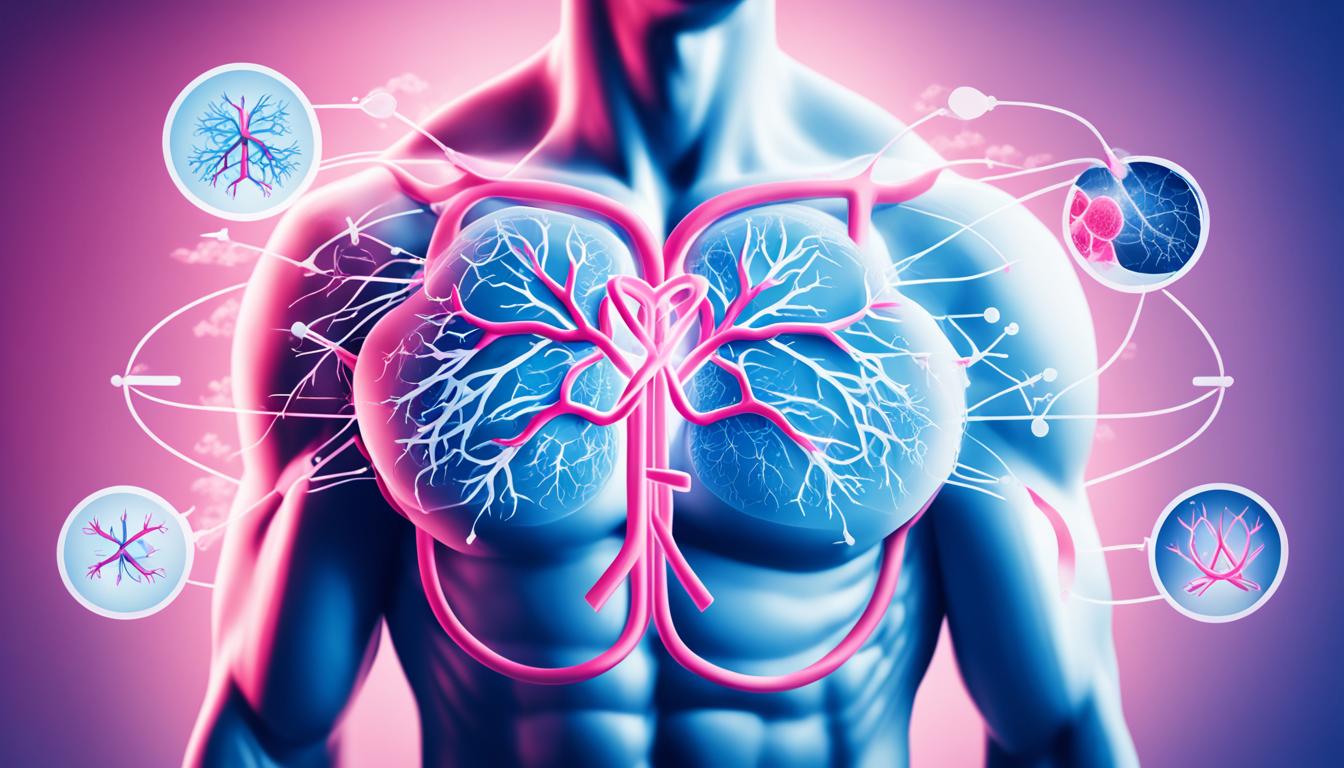Male breast cancer is a rare issue that affects men globally. Even though men don’t have visible breasts like women, they do possess some breast tissue. This makes them at a small risk for breast cancer, which can increase with age.
Several factors can raise the chance of male breast cancer. These include family cancer history, radiation exposure, huge breasts, hormone therapies, and specific genetic problems. For males, signs are often like those for women and might include a chest lump. To confirm a diagnosis, doctors carry out physical exams, use mammography, and take biopsies.
Surgery, radiation, chemotherapy, hormone treatments, and targeted therapies are available to treat male breast cancer. Scientists are also investigating the use of stem cells in therapy. Always staying in touch with your doctor is crucial after diagnosis for proper disease management.
Key Takeaways:
- Male breast cancer is uncommon but can happen worldwide.
- Men have some breast tissue, which might lead to this cancer.
- Things like family cancer history and some treatments could raise the risk.
- A chest lump is a common symptom for males having this cancer.
- Doctors use exams, mammography, and biopsies to diagnose it.
- Treatments vary from surgeries to stem cell research.
- Regular check-ups after diagnosis play a big role in managing the disease.
Diagnosis and Treatment of Male Accessory Breast Cancer
Male accessory breast cancer is very rare, especially in men. But knowing about its diagnosis and treatment is crucial. Mainly, surgery is needed first. This is followed by other treatments like chemotherapy, radiotherapy, and endocrine therapy.
On average, it affects men at around 67 years old. They might feel pain or see a colored mass. Swollen areas with a discharge could be a sign. If these signs show up, it’s important to see a doctor.
Diagnosis should follow the latest breast cancer guidelines. Treatment involves a biopsy and surgery. Along with this, chemo, radiotherapy, and hormone therapy are common.
Systematic Review of Male Accessory Breast Cancer
A systematic review looked at what we know about this cancer. It aimed to guide diagnosis and treatment. The review found surgery and other treatments to be effective.
Early detection and action are crucial for good results. It also stressed the need for more knowledge in the medical field and public awareness about this form of cancer.
| Treatment Options | Success Rates |
|---|---|
| Primary surgical resection | 85% of cases |
| Chemotherapy | 60% of cases |
| Radiotherapy | 70% of cases |
| Endocrine therapy | 75% of cases |
Success rates vary for different treatments. But, each case is unique. Decisions should be made with your doctor’s advice.
The picture shows how important it is to diagnose and treat this cancer correctly. It reminds us to spread awareness and learn more about this issue.
In conclusion, knowing about male accessory breast cancer is important. Even though it’s rare, surgeries and various treatments can help. Catching it early and acting quickly can make a big difference for patients.
Prognosis and Survival Rates of Male Breast Cancer
Survival rates vary based on factors like cancer stage, type, and treatment success. Men’s breast cancer outlook often lags behind that of women. This is largely because it’s often identified later.
For male breast cancer, 5-year survival rates fall between 35.3% and 41.7%. Catching it early and starting treatment fast are key. Knowing about this type of cancer is crucial for better patient outcomes.
It’s vital for men to have regular check-ups and stick to their treatment plans. Along with support from healthcare teams and support groups, this could significantly boost their life quality.

